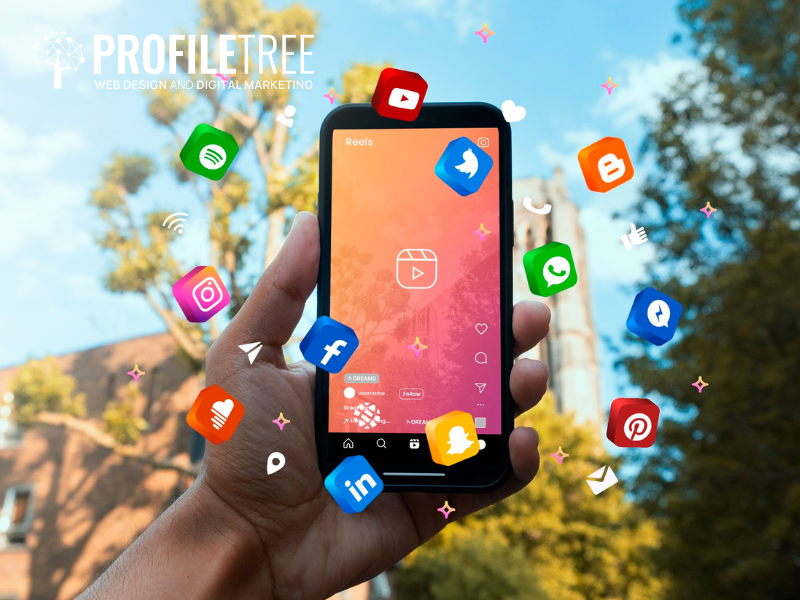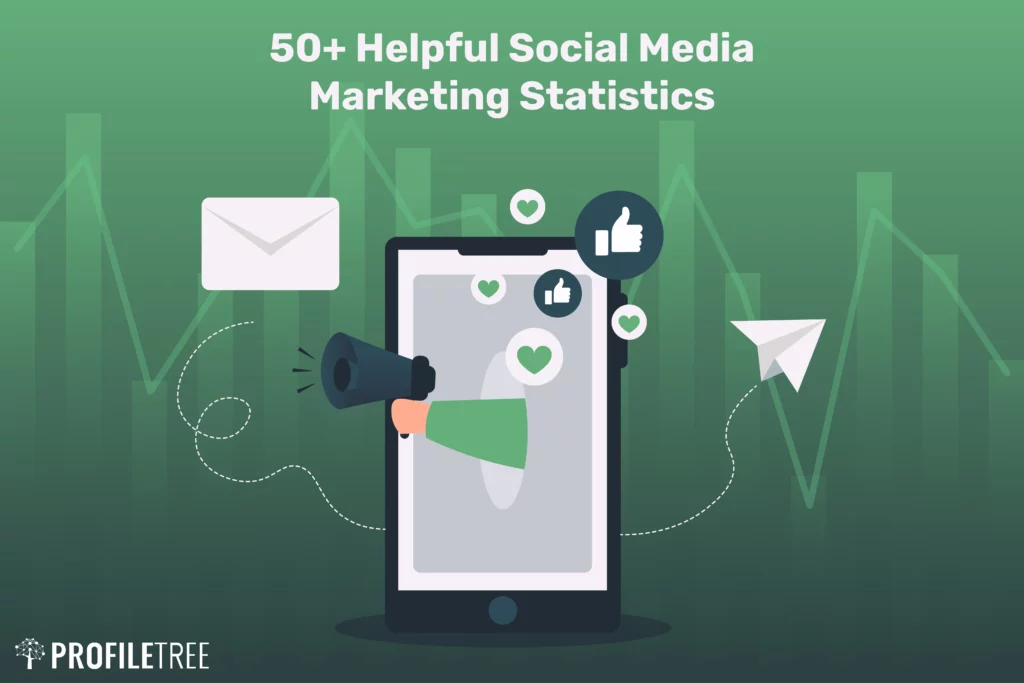In today’s digitally connected world, social media plays a central role in our lives. We connect with friends and family, share experiences, and even conduct business through these platforms. However, this growing reliance on social media has also created a fertile ground for a dangerous threat: social media phishing.
Phishing, the deceptive practice of stealing personal information through fraudulent online communication, has evolved beyond traditional email attempts. Social media platforms, brimming with personal data and trusting connections, have become prime targets for attackers. These attacks can have devastating consequences, compromising sensitive information, causing financial losses, and damaging personal and professional reputations.
This article delves into the alarming rise of social media phishing, exploring its prevalence, impact, and the evolving tactics employed by attackers. We will equip you with the knowledge and practical tips to identify and avoid these malicious attempts, safeguarding yourself and your online presence.
The Rise of Social Media Phishing: A Growing Threat in Numbers

Phishing attacks have long plagued the digital landscape, but social media has emerged as a fertile ground for these deceptive attempts. Unlike traditional email phishing, which may be plateauing, social media phishing scams are experiencing an alarming surge, posing a significant threat to individuals and organisations.
Exponential Growth
The Anti-Phishing Working Group (APWG) reported a staggering 1.35 million unique phishing sites identified in the last quarter of 2022 alone. This represents a significant increase from previous quarters, highlighting the continuous rise in phishing activity.

According to a report by Verizon, 79% of phishing attacks in 2022 originated from phishing emails. However, social media phishing is catching up rapidly, with some experts estimating that it could soon surpass email as the primary attack vector.
Social Media’s Allure
Social media phishing attacks are experiencing a disproportionate surge compared to traditional email phishing. While email phishing attempts may be plateauing, social media scams have witnessed a growth of over 150% since 2019, as reported by StationX. This disproportionate increase highlights the growing attractiveness of social media platforms for attackers.
A study by GetAstra Security revealed that nearly 8% of all social media cyberattacks are perpetrated through phishing attempts. This translates to many individuals and organisations falling victim to these deceptive tactics on social media platforms.
Targeted Platforms
Specific social media platforms have become hotspots for phishing activity. LinkedIn accounts for nearly half of all social media phishing attempts, according to GetAstra Security. This is likely due to the abundance of professional information and connections on this platform, making it an attractive target for credential theft and financial scams aimed at businesses and professionals.
Other popular platforms like Facebook and Instagram are also frequently targeted by attackers. These platforms offer a large user base and a more casual environment, making them suitable for broad phishing campaigns targeting personal information and financial data.
Evolving Tactics
Attackers constantly refine their techniques to exploit user trust and bypass security measures. Common tactics include:
- Creating fake profiles impersonates legitimate companies, influencers, or friends and family.
- Sending malicious messages disguised as legitimate communication, such as notifications from social media platforms, password reset requests, or urgent messages from seemingly trusted contacts.
- Using phishing links embedded within seemingly harmless content, such as social media posts, comments, or private messages. These links often lead to fraudulent websites that steal personal information or login credentials.
Financial and Reputational Impact
The consequences of falling victim to social media phishing can be severe. Individuals may lose access to their accounts, suffer financial losses due to stolen financial information, and even experience damage to their personal or professional reputations.
Organisations targeted by social media phishing attacks can face data breaches, financial losses, and reputational damage, potentially impacting their customers, employees, and overall brand image.
These statistics and the evolving tactics employed by attackers paint a concerning picture of the growing threat of social media phishing. As individuals and organisations increasingly rely on these platforms for communication, collaboration, and business activities, it’s crucial to remain vigilant, understand the latest phishing tactics, and implement robust security measures to protect our valuable information.
Impact of Social Media Phishing: Beyond Stolen Logins

Social media phishing extends far beyond simply stealing login credentials. Its consequences can be deeply damaging, impacting individuals, organisations, and even entire communities. Let’s delve into the multifaceted impact of this growing cyber threat:
Individual Losses
- Financial Theft: According to a report by Javelin Strategy & Research, in 2022, phishing attacks resulted in an average loss of $1,774 per victim in the United States alone. This translates to over $5 billion stolen from individuals in the US and billions more globally each year.
- Identity Theft: The Federal Trade Commission (FTC) reported receiving over 1.3 million identity theft complaints in 2022, with phishing attacks being the leading cause in 25% of these cases. This translates to over 325,000 individuals falling victim to identity theft due to social media phishing in the US alone.
- Data Breaches: A study by Verizon revealed that 82% of data breaches in 2022 involved a phishing attack, exposing vast amounts of sensitive personal data. This translates to millions of individuals having their personal information compromised due to social media phishing attacks each year.
Organisational Impact
- Data Breaches: The Ponemon Institute estimates the average cost of a data breach to be $4.24 million, highlighting the significant financial burden organisations face due to social media phishing attacks. In 2022 alone, the total cost of data breaches globally reached an estimated $10.5 trillion.
- Financial Losses: Beyond data breach costs, organisations can suffer financial losses through:
- Fraudulent transactions: A report by IBM found that phishing attacks are responsible for 16% of all cybercrime, resulting in significant financial losses for organisations through unauthorised purchases and fraudulent activities.
- Ransomware demands: Phishing attacks are often used as entry points for deploying ransomware, forcing organisations to pay hefty sums to regain access to their data.
- Business disruption: Successful phishing attacks can disrupt internal operations, hinder communication, and lead to productivity losses, further impacting an organisation’s bottom line.
- Reputational Damage: A study by PwC found that 73% of consumers would lose trust in a company that experiences a data breach, highlighting the potential reputational damage associated with social media phishing attacks. This can lead to lost customers, decreased brand loyalty, and difficulty attracting new business partners.
Community-Wide Effects
- Spread of Misinformation: A 2022 report by NewsGuard found that social media was the primary source of online misinformation, with phishing attacks often used to propagate false narratives and manipulate public opinion.
- Erosion of Trust: The prevalence of social media phishing can erode trust in online interactions and discourage individuals from engaging freely on these platforms, hindering communication and collaboration.
These statistics showcase the widespread and multifaceted impact of social media phishing. By understanding the quantifiable losses and potential harm caused by these attacks, individuals and organisations can take proactive measures to mitigate the risks and safeguard themselves in the digital landscape. Remember, staying vigilant, adopting robust security practices, and educating yourself about the latest phishing tactics are crucial steps towards protecting yourself and your community from this growing threat.
Popular Platforms and Phishing Tactics: A Landscape of Deception

With the growing popularity of social media platforms, attackers have adapted their tactics to exploit specific features and user behaviours on these platforms. Let’s explore the most targeted platforms and the common phishing tactics employed by attackers:
Targeted Platforms
- LinkedIn: As a hub for professional networking, LinkedIn is a prime target for credential theft and financial scams. Attackers often create fake profiles impersonating recruiters, hiring managers, or colleagues, sending messages with phishing links disguised as job offers, interview requests, or internal company communications. These links can lead to websites that steal login credentials or financial information.
- Facebook: With its massive user base, Facebook attracts attackers seeking to steal personal information and financial data. Common tactics include fake friend requests from seemingly familiar profiles, phishing messages promising gifts or rewards, and malicious links in posts or private messages. These links can lead to fraudulent websites that steal login credentials or personal information.
- Instagram: This visually driven platform is often targeted by phishing scams promising increased followers, account verification, or free products. Attackers may create fake accounts impersonating celebrities, influencers, or even legitimate brands, sending messages with phishing links that lead to websites that steal login credentials or personal information.
Common Phishing Tactics
- Fake Profiles: Attackers create fake profiles that impersonate legitimate companies, influencers, friends, and family. These profiles are used to gain trust and encourage victims to engage with malicious content.
- Phishing Messages: Deceptive messages are sent through direct messages, comments, or platform notifications. These messages often create a sense of urgency or offer enticing rewards to lure victims into clicking on malicious links.
- Malicious Links: Embedded within seemingly harmless content, these links lead to fraudulent websites that steal login credentials and personal information or even infect devices with malware.
- Fake Login Pages: These websites closely resemble legitimate login pages of social media platforms or other trusted websites. Once victims enter their credentials, they are unknowingly compromised.
- Social Engineering: Attackers employ psychological manipulation tactics to exploit user trust and emotions. This can create a sense of urgency, fear, or excitement to pressure victims to click on malicious links or reveal personal information.
By understanding these popular platforms and common phishing tactics, individuals can become more vigilant and effectively identify and avoid these deceptive attempts. Remember, staying informed about the latest trends and remaining cautious when interacting with unknown profiles and suspicious content are crucial to protecting yourself from social media phishing.
Protecting Yourself from Social Media Phishing: Building a Wall of Defense
In the face of the growing threat of social media phishing, vigilance and proactive measures are essential to safeguard yourself and your online presence. Here are some key strategies to help you stay protected:
Be Wary of Unsolicited Requests
- Scrutinise friend requests and messages: Don’t accept friend requests from people you don’t know or whose profiles seem suspicious. Be cautious of messages from unknown senders, even if they claim to be from friends or colleagues.
- Verify sender identity: If you receive a message from someone you know, take a moment to verify their identity through another communication channel (e.g., phone call, text message) before engaging further.
Think Before You Click
- Hover over links before clicking: Don’t click on links embedded in messages or posts without hovering over them first. Check the URL at the bottom of your browser window to ensure it matches the intended destination.
- Beware of shortened URLs: Shortened URLs can mask malicious websites. Avoid clicking on shortened links unless you trust the source and can verify the destination.
Strengthen Your Security Measures
- Use strong and unique passwords: Create complex passwords for each social media account and avoid using the same password for multiple platforms. Consider using a password manager to generate and store strong passwords securely.
- Enable two-factor authentication (2FA): This adds an extra layer of security by requiring a second verification step beyond your password when logging in.
- Keep your software updated: Regularly update your operating system, web browser, and social media applications to ensure the latest security patches are installed.
Be Mindful of What You Share
- Limit personal information shared publicly: Avoid sharing sensitive information on your social media profiles, like your date of birth, address, or phone number.
- Be cautious about clicking on quizzes or surveys: These can often be used to collect personal information or spread malware.
Stay Informed and Report Phishing Attempts
- Educate yourself about the latest phishing tactics: Regularly educate yourself about the latest social media phishing trends and tactics used by attackers.
- Report suspicious activity: If you encounter a suspected phishing attempt, report it to the social media platform and consider notifying relevant authorities.
Adopting these practical strategies and maintaining a cautious approach can significantly reduce your risk of falling victim to social media phishing. Remember, staying informed, vigilant, and prioritising security measures are crucial to protecting yourself in the ever-evolving landscape of online threats.
Stay Vigilant, Stay Safe
Social media phishing presents a growing threat in today’s digitally connected world. Its impact extends beyond stolen logins, potentially causing financial losses, reputational damage, and even emotional distress for individuals and organisations.
However, by understanding the tactics employed by attackers, the targeted platforms, and the potential consequences, we can empower ourselves to build a strong defence against these deceptive attempts. Implementing practical security measures, remaining vigilant when interacting with social media content, and staying informed about the latest trends are crucial steps towards safeguarding your online presence and protecting yourself from the ever-evolving threat of social media phishing.
Remember, online safety is a continuous journey. By remaining committed to these practices and prioritising responsible online behaviour, we can confidently navigate the social media landscape and minimise the risk of falling victim to these malicious attacks.


